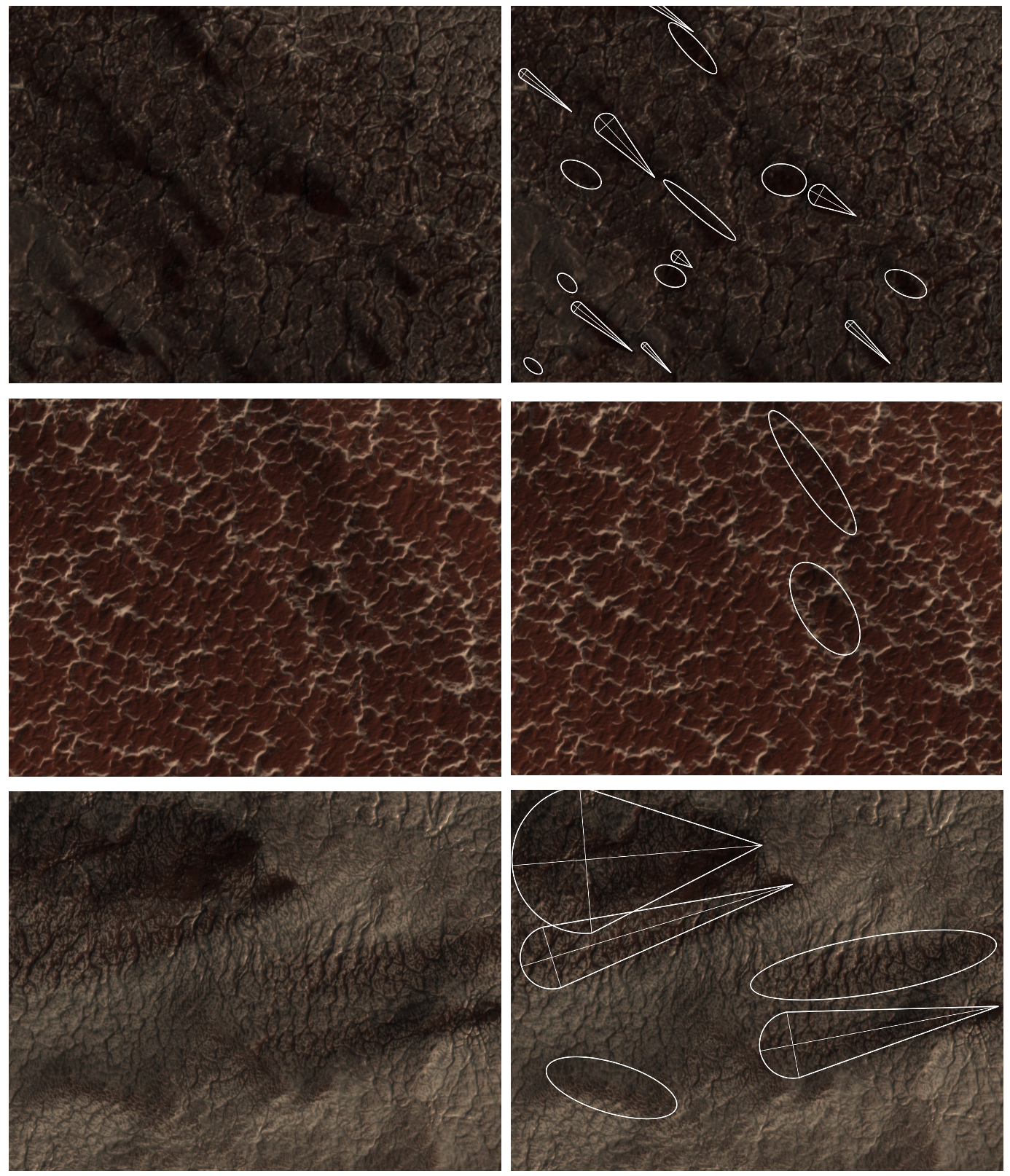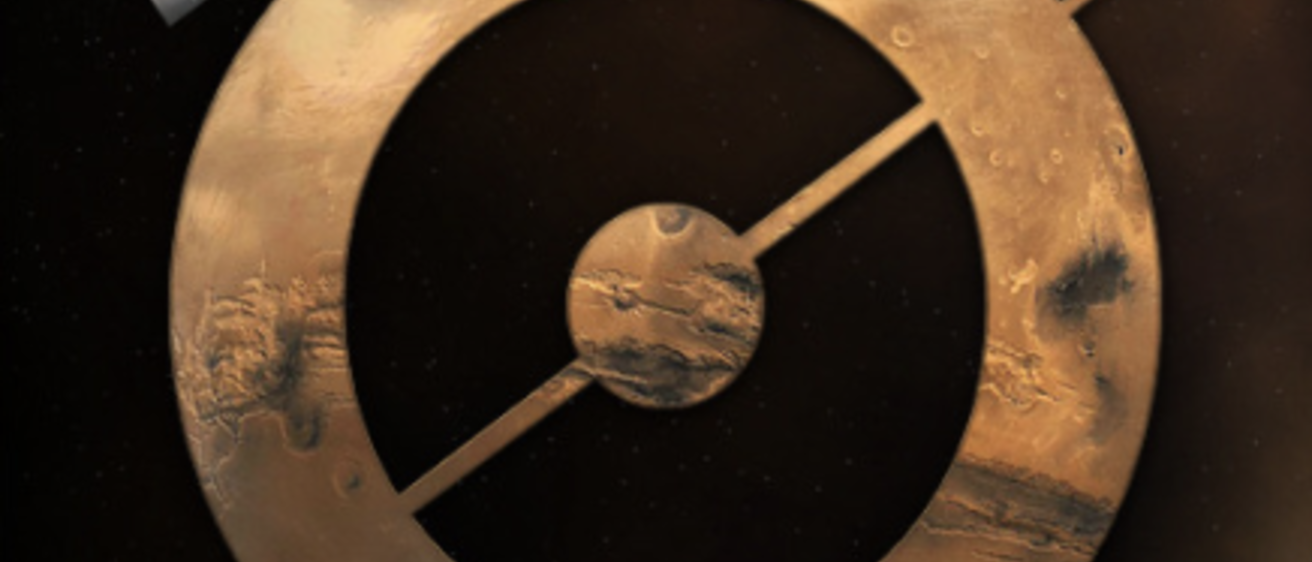
Breadcrumb
- Home
- Labs
- Advanced Labs
- Martian Landscapes
- Part 2: Zooniverse: Planet Four
Part 2: Zooniverse: Planet Four
Resources: Zooniverse: Planet Four
Surface and Weather of the Martian South Polar Region
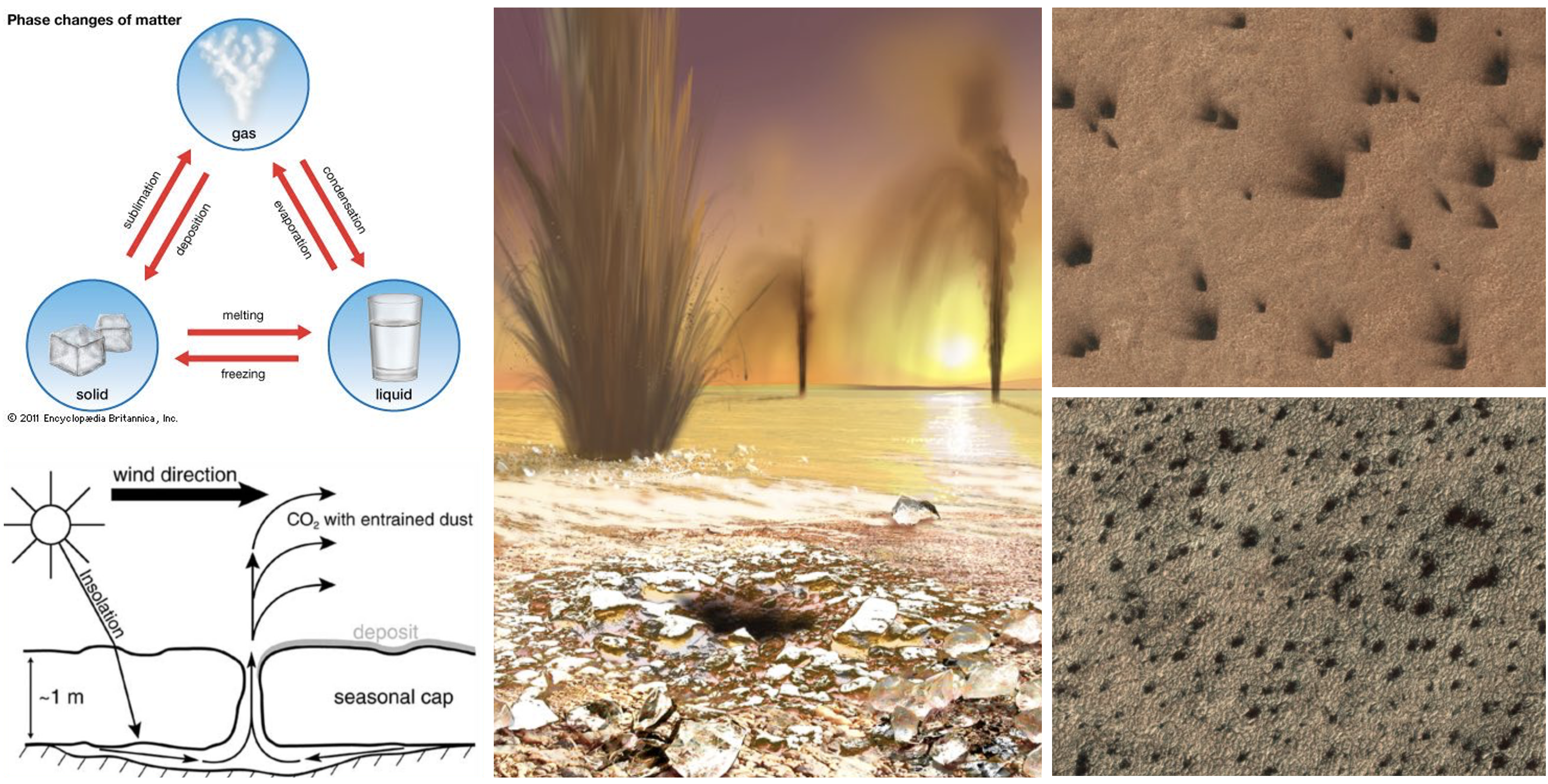
Image credits: Piqueux et al. 2003 (bottom left), Arizona State U/Ron Miller (center), NASA/JPL/U Arizona
Near the south polar ice cap, in winter the surface of Mars lays covered in a seasonal cap of frozen carbon dioxide ice. However, come Martian spring, this region becomes more active. Sunlight penetrates the ice and it undergoes sublimation while trapped below the surface (note that sublimation is the process of the solid state of matter turning directly into the gas state of matter; see the diagram at the upper left above). As pressure builds up, there are certain locations where the carbon dioxide gas, which is mixed with dark-colored material that has been eroded from the Martian surface located below the ice, is able to burst out from the seasonal ice cap. These fissures often occur at the locations of boulders that already protrude from the ice sheet. The cartoon at the lower left above diagrams this process. The gaseous geysers (an artists conception of this phenomenon is seen at center above) shoot carbon dioxide and entrained dust into the air. If wind is blowing at the time of the eruption, the dark material deposits onto the ice cap in a 'fan' shape, originating at the point of rupture and spread out away from the point in the direction the wind was blowing (see top right image above). The length and shape of these features indicate the degree and nature of the present wind gusts. If wind is not blowing at the time of the eruption, the dark material falls onto the ice cap in a 'blotch' shape (see bottom right image above).
The Mars Reconnaissance Orbiter and HiRISE (High Resolution Imaging Science Experiment)
The Mars Reconnaissance Orbiter (pictured below) launched in August 2005 and arrived at Mars in March 2006. Its mission goals are to study the geology and climate of Mars and provide information about potenial future Mars landing sites. HiRISE is a telescope and camera combination aboard the orbiter that has a resolution 0.3 meters per pixel, meaning that every pixel in the images you see represent about 0.3 meters, or about 1 foot. With this resolution, features the size of a coffee table on Mars can be resolved by HiRISE.
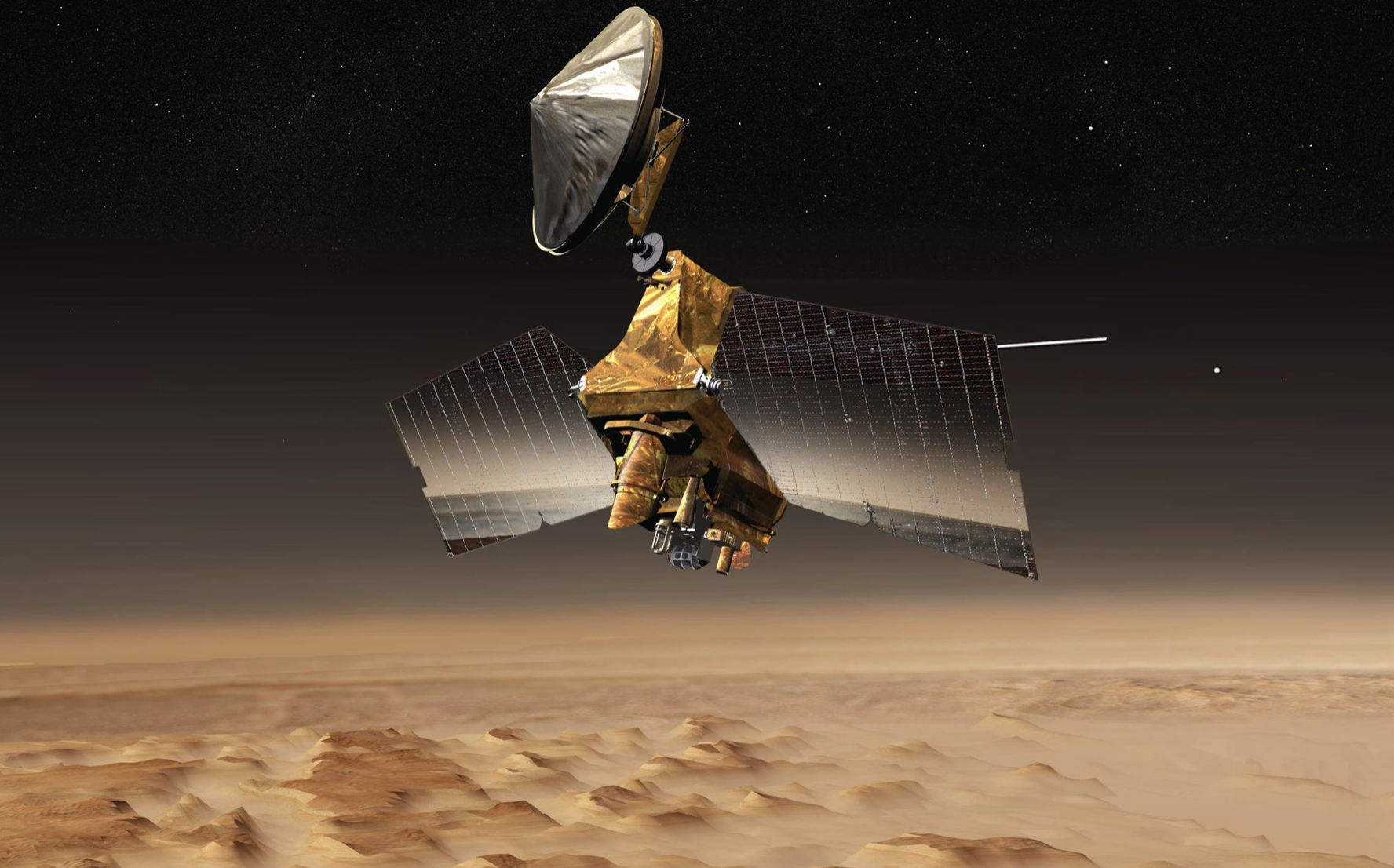
An artist's rendition of the Mars Reconnaissance Orbiter above the Martian surface. Image credit: NASA/JPL/U of Arizona
Today you will Classify images of the surface of the Martian south pole, looking for seasonal fans and blotches. These image are taken by HiRISE. The work you will do cannot yet be done successfully by computers because, first of all, there is just so much data currently, and second, because the human eye is so much better able to note slight differences in shapes and color gradations. Not only is the work you do valuable scientific analysis, but your classifications will also be used as a part of training of machine learning of comptuers so this type of analysis can be done more quickly and accurately by computers in the future. By cataloging 'fan'-shaped dark material and 'blotch'-shaped dark material on the surface of Mars' south polar cap, you will aid scientists in understanding the surface and weather of Mars: where, with what strength, and for how long winds that displace dust from gaseous carbon dioxide geysers blow, how the deposited material erodes over time, and whether or not the fissures in the ice cap occur at the same locations from season to season.
How to Use Zooniverse: Planet Four
Visit the webpage for Zooniverse: Planet Four. When you arrive at the webpage, click 'Get started'. You will first be prompted to review a short tutorial. Read through this. You will then be brought to the main Classify page where on the left of your screen you will see an image from HiRISE and on the right of your screen you will see a question that asks 'Are there seasonal fans and/or blotches visible in the image?' (see below).

If you do not notice any dark fans and/or blotches in the image, click 'No' and then click 'Done'. But if you do, click 'Yes' and the option 'Next →' will activate. Click this and you will then have the option to draw fans and blotches as seen below. Classify all features and then click 'Done'. If at any point in time you need more guidance than what is given on this lab webpage, you can click 'ABOUT', 'TUTORIAL', and 'NEED SOME HELP WITH THIS TASK?' (yellow stars above) to read/revisit more information about this Zooniverse project.
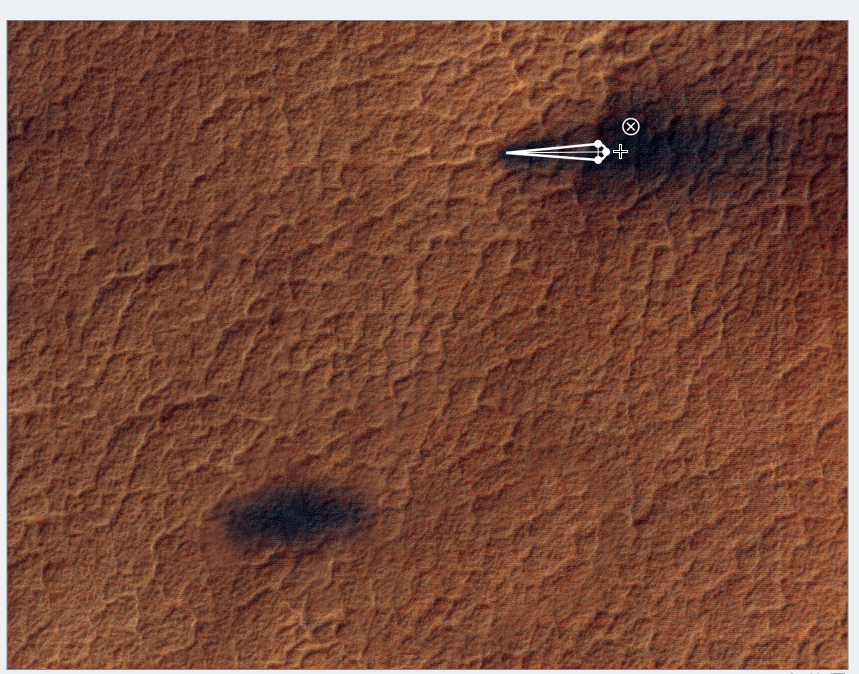
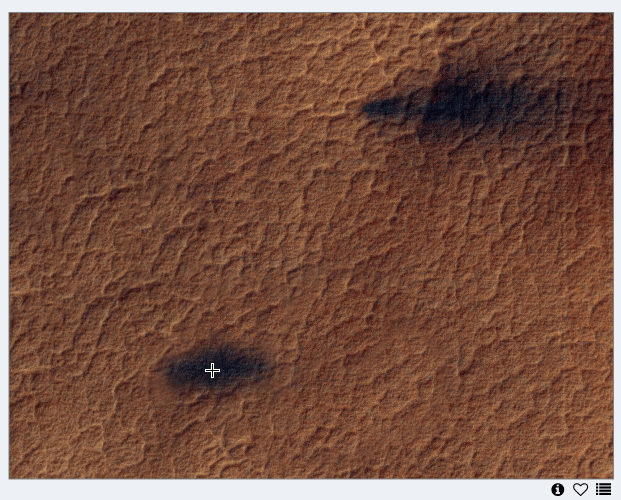
Classify the Images to Study the Surface and Weather of the Martian South Pole
In some images, no dark material is present on the image of the Martain south pole, such as in the four images below. If this is the case, just click 'No' and then 'Done' and proceed to the next image. These images seem to be the most common.
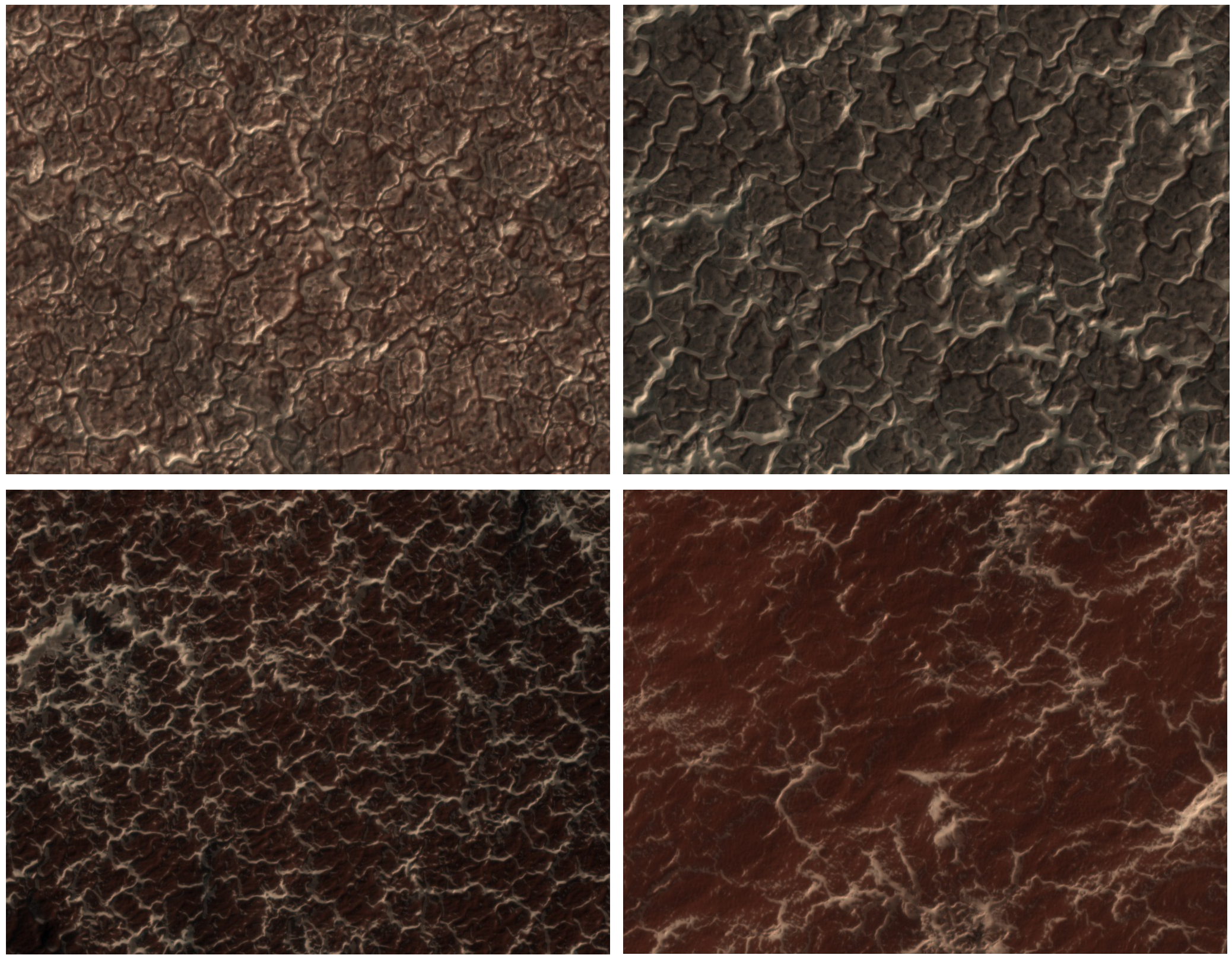
In some images, dark material is prsent on the image of the Martain south pole. If this is the case, click 'Yes' and then 'Next →' and then outline the features present before clicking 'Done' as has been marked for the three images below. These images seem to be less common; you may need to click through multiple HiRISE images with no dark materials before you find a image with fans and blotches you can mark.
